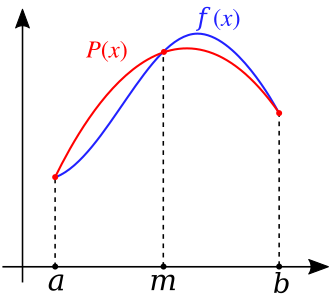

The starter kit contains the following files: The easiest, but is strangely the least documented. Needs to be pointed at a compiled, C-style function to work. Frankly, I didn't find all the answers I needed in the Cythonĭocumentation and had to do some good old-fashioned guesswork and Note that I don't fully know all the jargon names given to bits ofĬython. Properly, and with no real tutorial or simple advice to follow, I made
#Scipy integrate quad how to
It took me a couple of hours to figure out how to get this to work It also happens that I was familiar with Cython. The one that seemed likely to result in the cleanest, most modularĬode. That none of them were documented particularly well, but Cython was Faced with the above options (C, Numba, Cython), I noticed Integrations, while keeping the project as high-level and pythonic as I was keen to help a colleague accelerate their numerical

Perhaps you have noticed that SciPy offers low-level callback Interpreted Python when using this for an oscillatory integral
#Scipy integrate quad update
Update : we got an approximately 10x speedup over All four files referenced below can be found in theĪs for whether it is faster, I haven't tested it on a challenging The content below is reproduced as the README.md file in

Integration in SciPy with the integrand specified in a compiled Cythonįunction. Result of my constructing a minimal working example to do numerical Most pythonic look and feel of the three choices.

#Scipy integrate quad code
Use Cython, the steps are fairly opaque I'm not sure they're anyĮasier for other methods (calling external C code directly, or using Python (when using scipy.integrate)? It turns out, if you want to Iterated bisection of the neighborhood of a tricky point around 60 is terminated prematurely on Windows, and it seems that the result thrown up is some partial integral over a subinterval.What do you actually have to do to speed up numerical integration in With the same version of SciPy (0.19.1 in this test), the results of plt.plot(eval_points, '.') look different. One way to visualize the process of integration is to declare a global list eval_points and insert eval_points.append(t) into tpx_wx. Results in 47.3631754795 for estimate_42, consistent with what quad returns on Linux. Replacing quad in est_lifetime with integrate.romberg(lambda s: tpx_wx(x, s, par, year), 0, 125 - x, divmax=20) One workaround is to use romberg method for one of the integration steps. See also Big integration error with integrate.nquad.īarring recompiling SciPy with better flags, it seems that one should avoid nested integration with quad while on Windows. This appears to be a known issue with the way that some Fortran code behind quad is compiled for Windows: calling it recursively can lead to failure in some cases. That is not the case as a simple plot of tpx_wx for x=42 from a=0 to b=125-42 clearly shows from matplotlib import pyplot as plt It has been suggested that the function is close to zero almost everywhere, as in this post scipy integrate.quad return an incorrect value. I am using scipy v1.1.0 and numpy v1.15.1 and Windows. Note however that estimate_43 looks fine. It should be about the same value as rough_estimate_42. Result, _ = integrate.quad(lambda s: tpx_wx(x, s, par, year), 0, 125 - x)Įstimate_42 = est_lifetime(42, year, par)Įstimate_43 = est_lifetime(43, year, par) Result, _ = integrate.quad(lambda s: mu_wx_par(x + s, year + s, par), 0, t) """ Second function to be integrated (which contains an integral itself)""" W = np.minimum(par + par * x + par * x**2, 0) Basically I'm trying to calculate the integral over exp where mu_wx_par is also a integral. I am using to calculate a double integral.


 0 kommentar(er)
0 kommentar(er)
